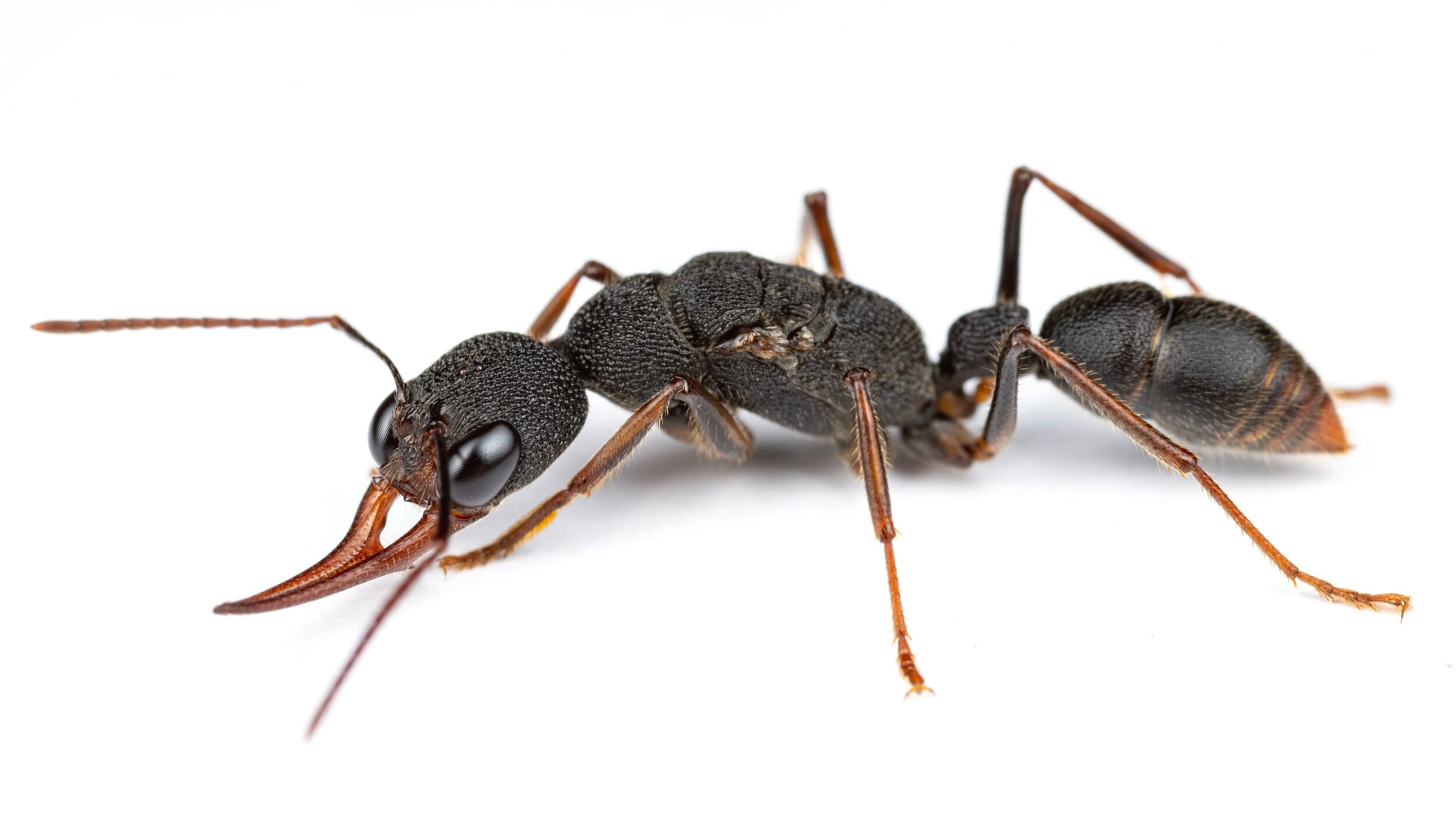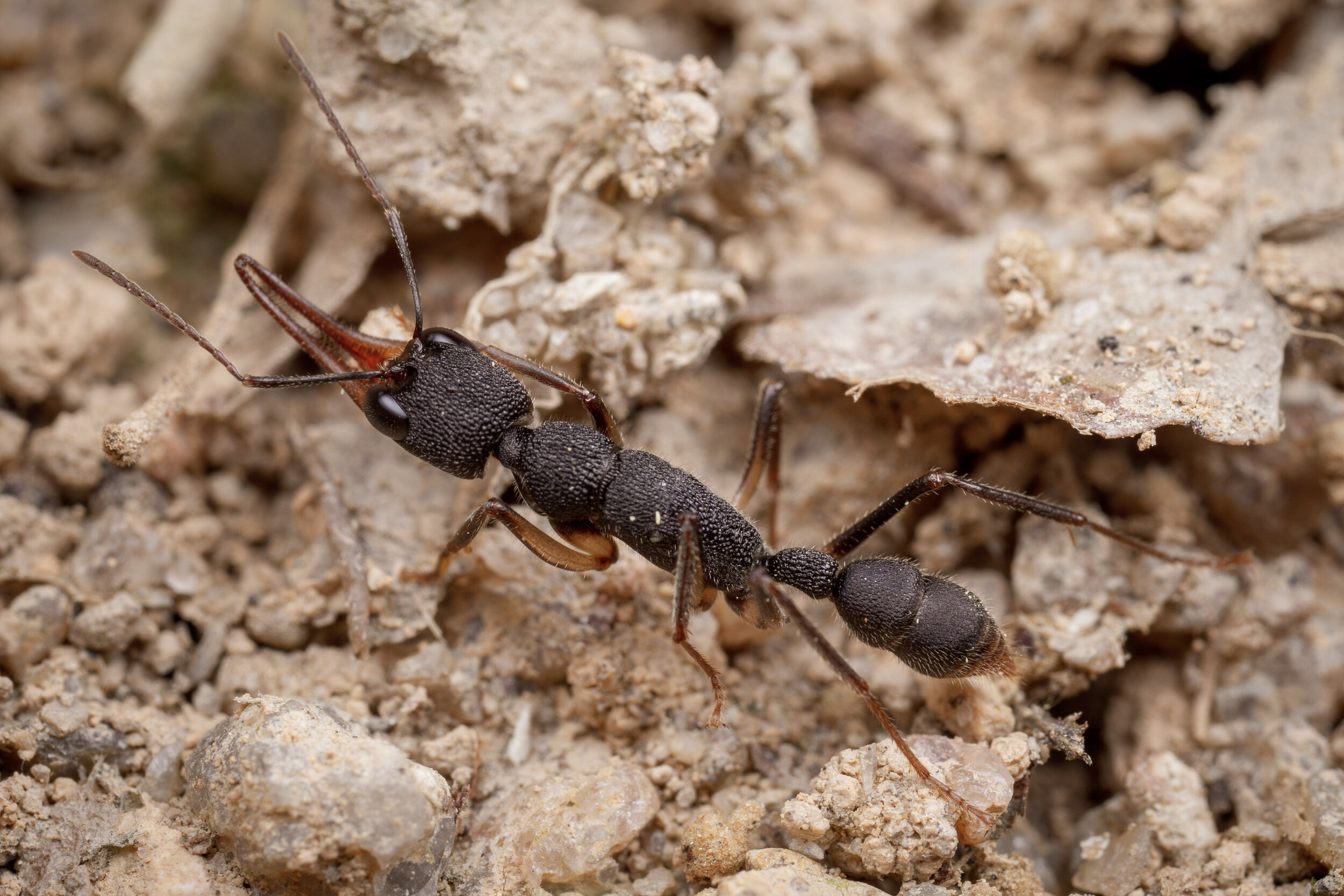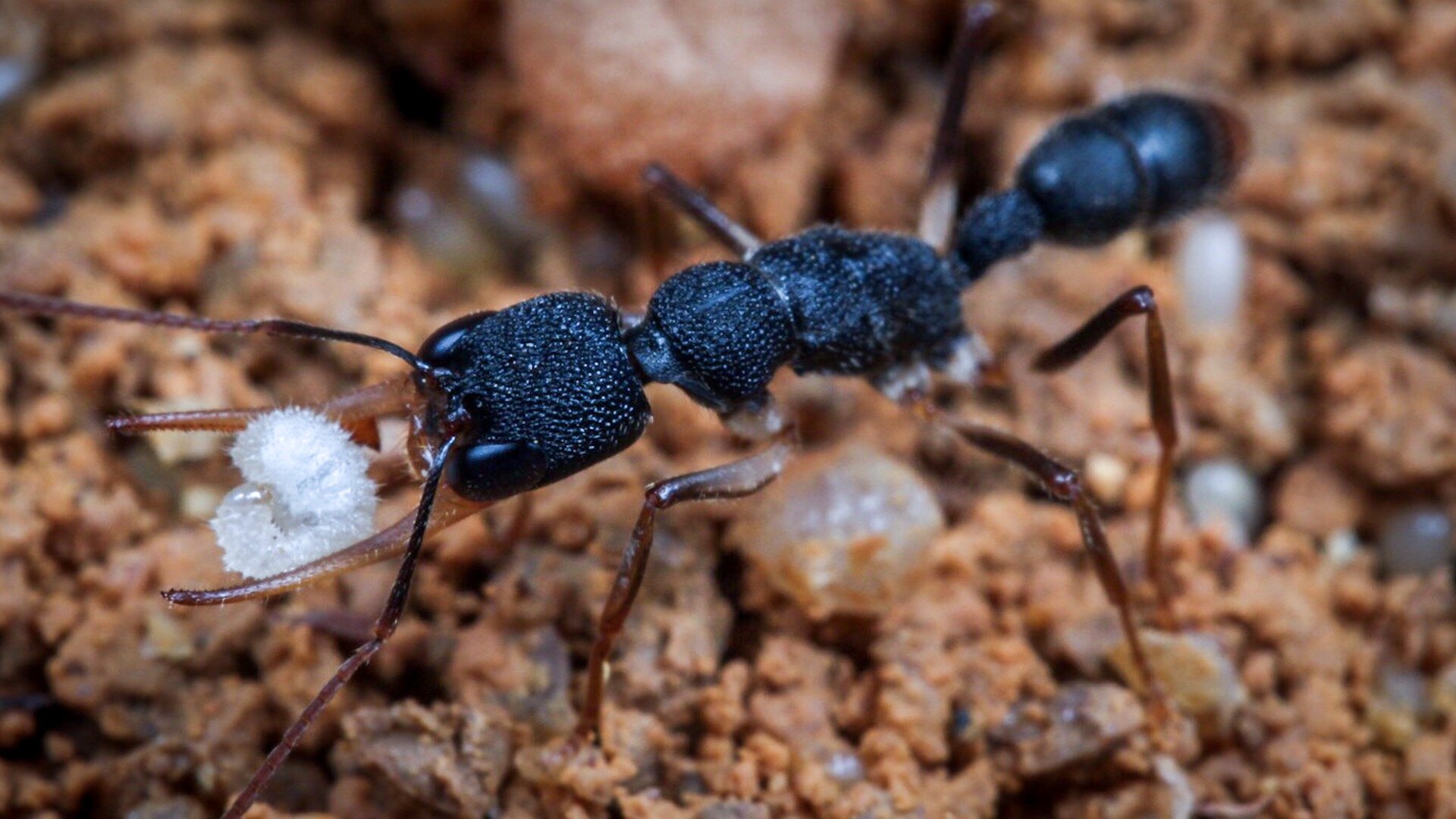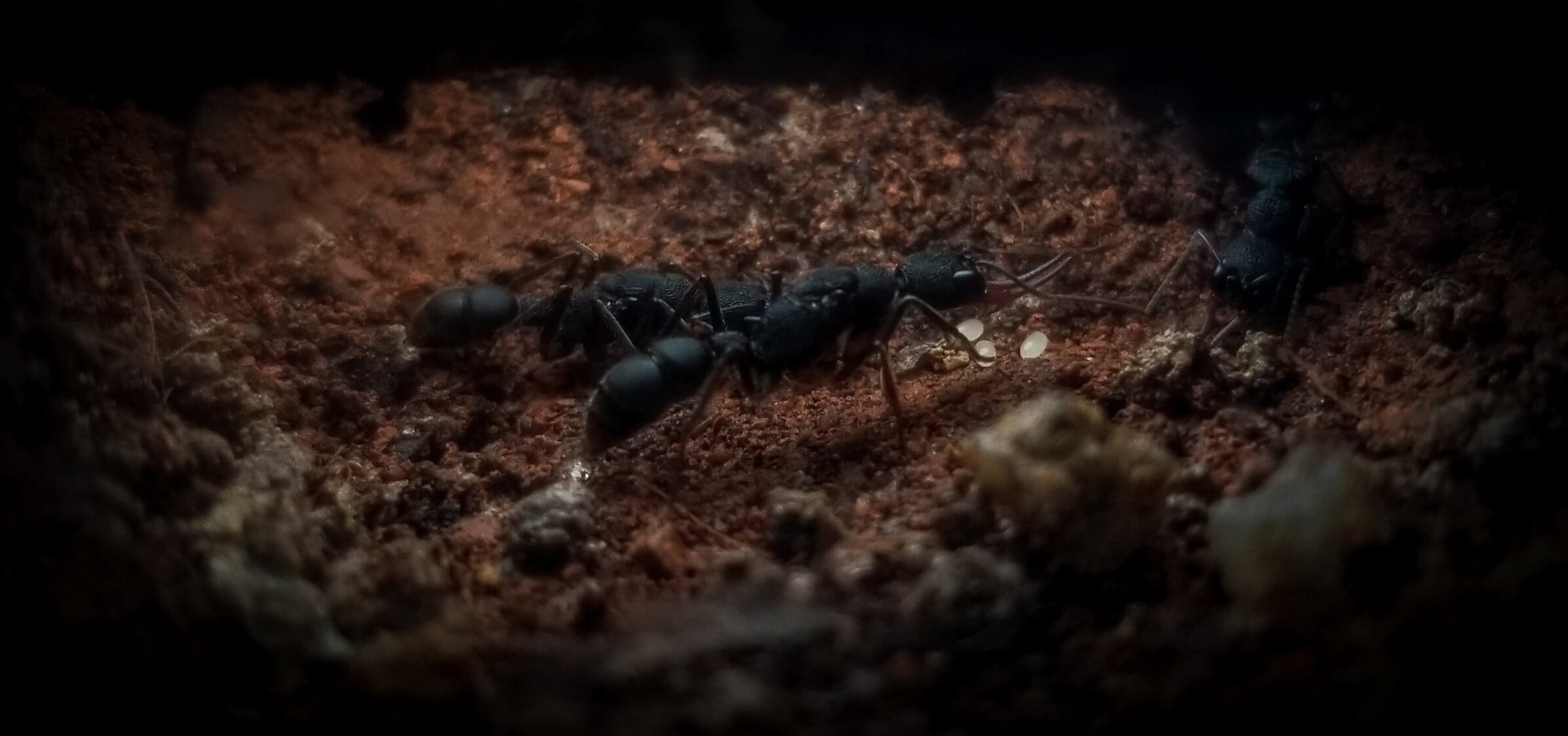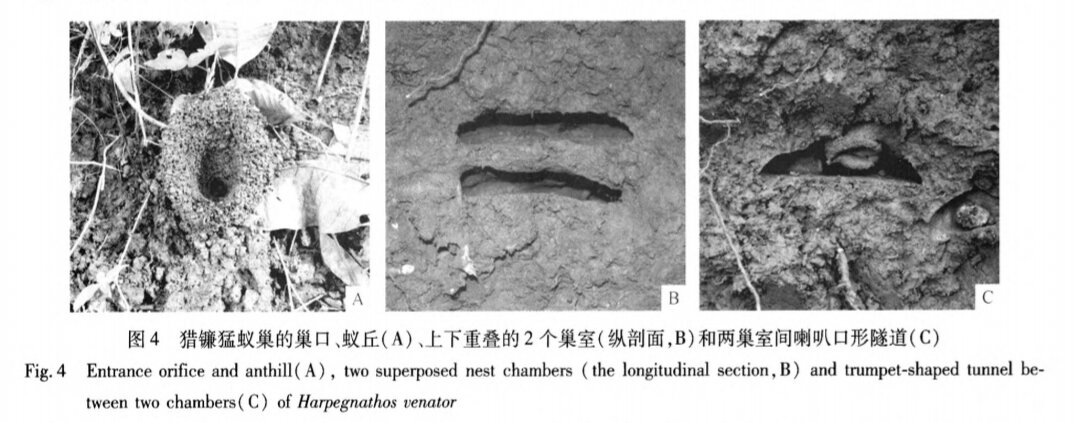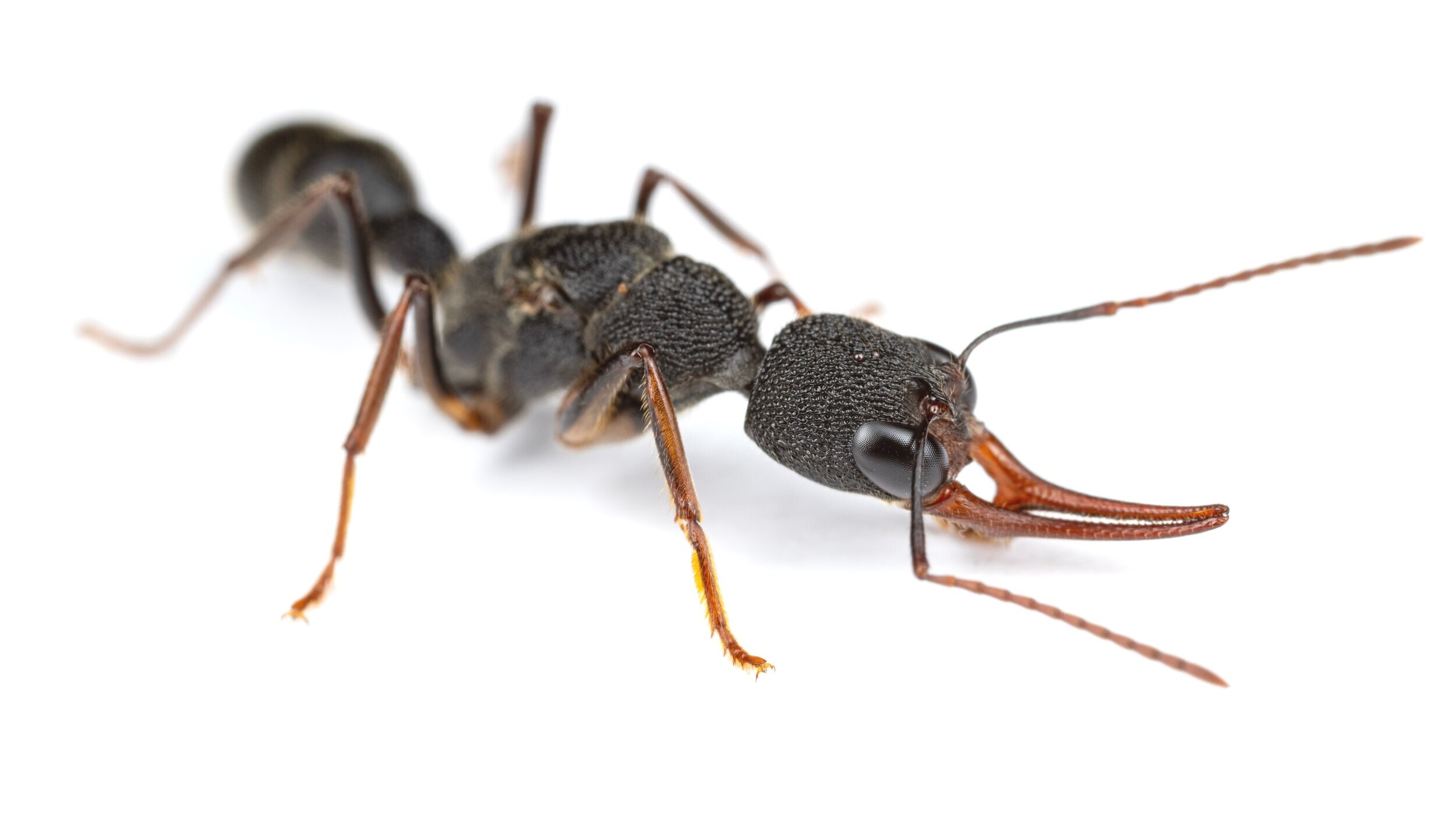Harpegnathos Jumping Ants - Care Guide and Ecology
Harpegnathos worker
INTRODUCTION / SUB FAMILY / GENUS
Within the Harpegnathos species, only two have been researched. Saltator with 90% of the total research and venator with the remaining 10%.
From my research and in this article, I am assuming that most of the behaviors and characteristics found in one species will translate into similar behaviors to the others as well.
The genus Harpegnathos belongs to the Ponerinae subfamily, which is notable for being different from other subfamilies of ants because they are considered to be more primitive, meaning they have more common characteristics with their wasp ancestors. They are also known for combining simple social organization with a high diversity of morphological and behavioral traits.
DISTRIBUTION
Harpegnathos genus worldwide distribution
This ant genus consists of 9 species, or 13 if you count the subspecies.
They are only found in Asia. In the following countries: India, Bangladesh, Nepal, Myanmar, Thailand, Laos, Vietnam, Malaysia, Singapore, Indonesia and China.
COMMON NAME
Harpegnathos jaw
Harpegnathos, from the Greek word harpe, which refers to a curved weapon such as a sickle, and gnathos which refers to jaw. Hence the sickle jaw or curve blade jaw ant. But we normally call them Jumping Ants.
MORPHOLOGY
Harpegnathos though they are frequently compared to Myrmecia species from Australia are easily identifiable. Their long upward curved mandibles, and remarkably large and prominent eyes, with their elongated thorax instantly identify them.
Harpegnathos venator Queen
These ants also possess a sting, which they use for immobilizing their prey or on you if you ever attempt to pick them up. Their sting has been described as an acute and localized pain, followed by redness and swelling around the sting area which tends to fade away after 30 minutes.
SPECIAL CHARACTERISTICS (VISUAL ACUITY AND JUMPING ABILITY)
Vision is very important in this genus. Harpegnathos optic lobes volume is only second to Gigantops destructor (a South American species), both known to forage during the day time and catch their prey by associating vision and a jumping ability.
Harpegnathos eyes
The ability to jump has been reported for only very few ants species, and of these, the harpegnathos saltator was probably the first documented case. Overall jumping capacity has been reported as high as 2 cm and up to 10 cm long jumps.
3 types of jumps have been identified in the Harpegnathos case...
Jumping as an escape reaction provoked by threatening situations, also called the escape jumps. Jumping as a purpose to catching prey or also called the hunting jumps and finally the group jumps, where all the ants start jumping, with a speculated purpose of parasite avoidance.
Another very typical characteristic Harpegnathos behavior, is the vibrating gaster, a series of short, rapid, lateral movements of the gaster, where the ants are believed to be assessing the load distribution across its legs in case a jump proves necessary.
CASTES
Harpegnathos colonies, as usual in Ponerine ants, tend to be small. The total number of individuals vary from a few ants to a maximum couple of hundreds. Colonies are comprised of 5 castes. Males, Queens, and Workers, which can then be divided into foragers, nurses and gamergates. In Harpegnathos both Queen and Workers castes can reproduce sexually, but we will explain this in more detail further ahead.
Harpegnathos Queen Worker Caste Dimorphism
LIFE CYCLE
The life cycle of Harpegnathos from egg to adult takes around 82 days at 25C. Depending on the colony stage, eggs may take up to 30 days to hatch, larvae take about 19 days to pupate, and pupae take about 33 days to emerge into adult ants.
Harpegnathos eggs
For the colonies first workers, it may take between 3 to 4 months for them to arrive but by the 6th month the colony should have 10 workers already. Regarding their life spans, it can also vary. Adult workers can live up to 1 year, gamergates can live from 1 to 2 years, while queens can live from 3 to 5 years. This variance reflects the wild vs laboratory conditions.
Harpegnathos life cycle
FORAGING
Harpegnathos are known to be strictly lone visual hunters which never use foraging trails. Only the older colony workers forage, while the younger ones stay in the nest tending for the brood.
Their main foraging activity occurs during the early morning from 5am to 10am and in the afternoon from 16pm to 19pm.
Harpegnathos daily activity periods
A major proportion of the prey captured were jumping or fast-running insects such as isopods, arachnids, crickets and forest cockroaches. These ants hunt their prey searching systematically below leaf litter. When they locate the prey, they jump on to it and catch them by using their long forceps-like mandibles and paralyzing them with their venom injected through their sting.
Harpegnathos foraging worker
Their diet is surprisingly broad. Individual workers carry their prey items back to the nest alone. This could explain why prey size is typically smaller than the ants themselves.
FEEDING
Harpegnathos primitive traits are also shown in the feeding mechanism. Harpegnathos is a truly predatory ant, with workers feeding exclusively on the haemolymph of the arthropod prey items, and always refusing any type of sugar or nectar diet, as we know that type of diet only evolved later in the higher ant species. Larvae are highly mobile and are capable of tearing up the prey without the assistance of the adult ants.
Harpegnathos larvae
Adult workers of this genus do not engage in trophallaxis with their larvae, a trait shared by other Ponerine species.
NESTING
Harpegnathos venator founding chamber
Nest structures are one of the few elements that have been studied on both saltator and venator species. Saltator nests occur normally near the soil surface and include a more complex architecture, with a variable amount of chambers stacked on top of one another.
Harpegnathos saltator nest section
Whereas venator nests are more simple, with only 2 or 3 chambers, and their nests are normally found on clay embankments.
Harpegnathos nest architecture is inverted, this means, that the entrance is lower than the nest level, and also the ants tend to congregate on the higher chambers instead of the lower ones.
The nest entrances are normally shaped as a very characteristic funnel with a 3 cm diameter. Inside the nest, chambers are divided into atrium and brood chambers.
Harpegnathos venator nest section
The atrium is directly connected to the entrance and between atrium and brood chambers, the connection is made by another funnel structure. The funnel is typically about 2 cm above the floor of the atrium and we can observe the ants needing to rear up on their hind legs to access the funnel. This type of architecture serves two purposes, first it helps to prevent flooding of the brood chamber, and secondly creates a physical obstacle to which other arthropods may not be able to overcome in case of a nest invasion.
Both species have one more thing in common, which is their garbage or refuse chambers. In these humid and dark refuse chambers, we can find many types of symbiotic relationships between Harpegnathos and other insects, like isopods and millipedes. In particular, the association between venator and the millipede Glyphiulus granulatus, where these scavengers help the ants get rid of their decomposing matter.
REPRODUCTIVE STRATEGY
Like we said in the beginning, in Harpegnathos, both female castes reproduce sexually, but only queens are capable of dispersing and starting new colonies. Their foundation strategy is ICF, an independent colony foundation which in this case is semi claustral, where queens regularly leave the nest chamber to forage for food. They can be polygynous but only one queen will be the dominant one.
Harpegnathos saltator reproductive strategy
Once the queen dies, workers compete in a ritualized dominance tournament to decide a new group of reproductives. This is only possible because Harpegnathos workers can inbreed with males that eclose in their own nests. Once established, they display dominant behavioral characteristics and serve as the sole egg-layers in the colony. Further attempts at reproduction by individual workers are prevented by policing nest mates, because prolonged disputes about reproduction also reduce colony productivity. Workers are clearly able to accurately assess the ovarian activity of nest mates and they adapt their behavior accordingly.
Harpegnathos has a small queen/worker dimorphism but a distinct one. Queens can lay two eggs per day, and gamergates laid one egg per day.
Harpegnathos Queen
Regarding the internal colony hierarchy, it is achieved and maintained through a series of specific behaviors.
First one is duelling, which we talked about earlier, which is associated with the establishment order of new reproductives and the second one is worker policing, which is associated with the inhibition of reproduction.
For order establishment, the highly ritualized antennal tournaments involve individuals of similar status while unilateral attacks, such as biting of body parts followed by violent jerking apparently occur between the reproductives whose status has already differentiated.
Regarding inhibition of reproduction, it involves biting of mated workers who have subordinate status and may be attempting to reproduce. Worker policing inhibits ovarian activity in the individual that is policed.
CONCLUSION
Harpegnathos, a mini story
Hope you have enjoyed reading this post and I have left you a very small video in the link down below with, in case you are interested, about the beginning of a Harpegnathos venator new colony, a mini story i decided to call, Ants of a Spring Dawn(ing).
Thank you once again for stopping by and taking the time to read.
Hope to see you in the next blog post.
Bye! Cheers!
Related YouTube Video for a complete overview of the Harpegnathos genus.



